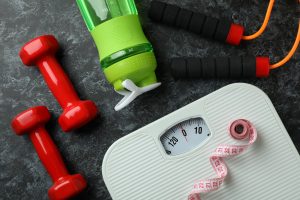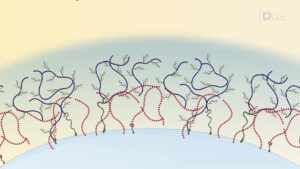Get Leaner by Eating More—Protein & Amino Acid Rules for Lasting Fat Loss
Slashing calories can make the bathroom scale drop, but it often strips away precious muscle mass, slows metabolism and leaves you “skinny-fat.” Research and real-world coaching experience show the opposite approach works better: raise daily protein to muscle-sparing levels, top up essential amino acids (EAAs) and let your body burn fat— not lean tissue— for energy. This article explains the science, gives you meal-building formulas and shows how clients maintain steady energy while trimming their waistlines.
1. Why Most Dieters Lose Muscle—and How to Stop It
- Protein deficit: A 2020 meta-analysis found diets under 1.0 g protein · kg−1 body-weight led to 30–60 % of weight lost coming from muscle (study).
- Low meal dose: Muscle-protein synthesis (MPS) peaks at ~25–30 g high-quality protein per sitting; smaller doses miss the anabolic threshold.
- Missing EAAs: Without enough leucine, isoleucine and valine, MPS stalls even if total protein looks adequate on paper.
2. The 25–30 g Rule—Every Meal, Every Day
Clients at Parkway Athletic Club start by hitting 25–30 g protein at breakfast, lunch and dinner. Practical examples:
| Food | Portion | Protein (g) |
|---|---|---|
| 93 % lean ground turkey | 115 g cooked | 28 |
| Whole eggs + carton egg whites | 2 eggs + 120 ml whites | 26 |
| Low-fat Greek yogurt | 200 g | 24 |
| Whey isolate shake | 1 scoop (30 g) | 25 |
3. Essential Amino Acids—Your “Insurance Policy”
Even with solid whole-food intake, adding 10–25 g EAAs daily fills gaps and spikes leucine for faster muscle repair. One scoop of a full-spectrum EAA powder pre-workout and another post-workout:
- Preserves lean mass in calorie deficits.
- Improves workout energy by sparing muscle glycogen.
- Ensures smaller appetites (common in older adults) still meet amino requirements.
4. How Eating More Can Lean You Out
- Higher thermic effect: Protein digestion burns ~20–30 % of its calories; carbs burn 5–10 %.
- Stable blood sugar: Balanced protein curbs insulin spikes and late-night cravings.
- Muscle retention: Each pound of muscle burns ~6–10 kcal · day−1 at rest—small but meaningful when multiplied across 10–20 lb gained or saved.
5. Sample High-Protein Day (≈ 2 000 kcal / 170 P / 170 C / 65 F)
- Breakfast (30 P): Vegetable omelette (2 eggs + 150 ml egg whites), avocado slice, salsa.
- Snack (25 P): Greek yogurt + 2 tsp honey + 1 Tbsp chia.
- Lunch (40 P): Turkey taco bowl—150 g lean turkey, 150 g cooked rice, lettuce, pico de gallo.
- Pre-Workout (15 P): EAA drink (10 g) + banana.
- Post-Workout (35 P): Whey isolate shake + berries.
- Dinner (30 P): 140 g grilled salmon, roasted broccoli, 200 g sweet potato.
6. Troubleshooting: Plateau Checklist
- Protein below 1.6 g · kg−1 goal weight? Bump by 10 % for two weeks.
- Scale stuck but waist smaller? You’re recomposing—stay the course.
- Energy low? Add 100 kcal carb window around workouts; keep protein static.
Quick FAQ
Can too much protein harm my kidneys?
In healthy adults, intakes up to 2.2 g · kg−1 show no adverse renal markers (study). Pre-existing kidney disease requires individual medical guidance.
Are EAAs better than BCAAs?
Yes. EAAs include all nine essential amino acids, whereas BCAAs contain only three; full profiles drive greater MPS.
Disclaimer: Information is for education and not a substitute for personalised medical advice. Consult a qualified professional before making major dietary changes.
Video Summary
For more actionable nutrition and fitness tips, subscribe to our channel:
https://www.youtube.com/@Vitality-and-Wellness
Need personalised meal plans or amino-acid guidance? Explore Parkway Athletic Club’s Nutrition Program:
parkwayathleticclub.com/nutrition



